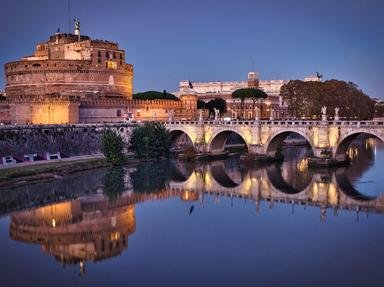Quiz Answer Key and Fun Facts
1. The Sanctuary of the Great Gods and all the buildings that supported the ritual ceremonies were built οn an isolated island of the Northern Aegean Sea whose mountain is called Saos. What is the name of the island?
2. To speak the names of the deities was taboo and they were usually refered to as Great Gods (Megaloi Theoi). In later antiquity, they were sometimes refered to collectively as the deities from Asia Minor, possibly Phrygian. What was that name?
3. The word "mystery" comes from "mystes" which comes from the verb "myein-myo", "to initiate someone into a cult by revealing its inner meaning through rituals".
However, during the time of the Mysteries of the Great Gods the verb had a different meaning. What was it?
4. The findings at Mikro Vouni have led the archaeologists to establishing a succession of events taking place during the initiation ceremony which was called the Sacred Way. One of the events was for the initiate to wear a sash around the waist. What color was the sash?
5. An initial stop in the Sacred Way was to enter the Theatral Circle which had rows for standing spectators, alternating with pedestals for statues, around a central altar. Knowing that all that was found of the statues were eyelashes, can you guess the material they were made out of?
6. The Hall of the Choral Dancers was built at the center of the temple complex, atop a pre-existing building of lesser importance. Its construction marked the beginning of a period of great prosperity for the Sanctuary of the Great Gods which coincided with the late Classical period in Greek architecture. Roughly when was it built?
7. The Rotunda of Arsinoe stands between the Hall of the Choral Dancers and the Anaktoron, at the end of the Sacred Way. It was built c. 288-270 BC as an offering by Queen Arsinoe II of which country?
8. The final stage of the secret rites, the unveiling of the sacred symbols, is believed to have taken place in the Hieron, the main temple of the Sanctuary of the Great Gods. It featured a double colonnade of six columns of which architectural order?
9. A 104 m stoa (colonnaded covered walkway) was found on the west side of the temple complex. In it, there were inscriptions of the names of initiates and envoys and the bronze statue of Philip V of Macedon (221-179 BC). An earlier and more well known Macedonian king of the same name, Philip II (359-336 BC), had met his wife Olympias during the initiation ceremonies of the mysteries.
What is the name of their famous son?
10. The most famous finding from the site of the Sanctuary of the Great Gods is the marble statue of "The Winged Victory" which is housed in the Louvre Museum. What is the Greek name of the goddess?
Source: Author
tiye
This quiz was reviewed by FunTrivia editor
bloomsby before going online.
Any errors found in FunTrivia content are routinely corrected through our feedback system.

